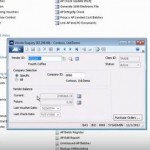In our Microsoft Dynamics SL blog entries over the last few weeks, we’ve been focusing on the Accounts Payable (AP) module, covering the AP setup options that offer so much flexibility for your unique way of doing business, as well as going over each of the following:
- Entering a payment with the Voucher and Adjustment Entry screen
- Using the Payment Selection screen to select the payments to be made
- Printing the checks
- Correcting problems with checks that have been printed
- Pre-payments
- The Voucher Entry — Distributed Liability screen
- Check reconciliation in Accounts Payable
- The “Pay When Paid” feature
- 1099 functionality
- Release AP Batches and Delete AP Detail screens
- Vendor Inquiry and Vendor History screens
Today we’re going to look at the reporting functionality that is available for Accounts Payable in Microsoft Dynamics SL.
Reporting in the Accounts Payable Module
You can use AP reporting functionality to do a check preview, and there are some reports you’ll want to run for 1099 processing, but the key reports are your transactional reports. Some reports, such as Vendor Trial Balance and Aged AP, run for the current period, and others, such as Vendor Period Trial Balance and Period Sensitive Aging, run for prior periods.
The Vendor Trial Balance report shows you all your current Accounts Payable activities. You can run it for one specific vendor, or for a group of vendors. The Vendor Period Trial Balance is the same thing, but you can run it for past periods and see AP activities beyond the current period.
The Aged AP Report gives you a snapshot of your current payables. You can easily see what is past due, and the time until due. The Period Sensitive Aging report is a good one to run when you are reconciling Accounts Payable with your General Ledger. It will give you the balance at the end of an entered period.








